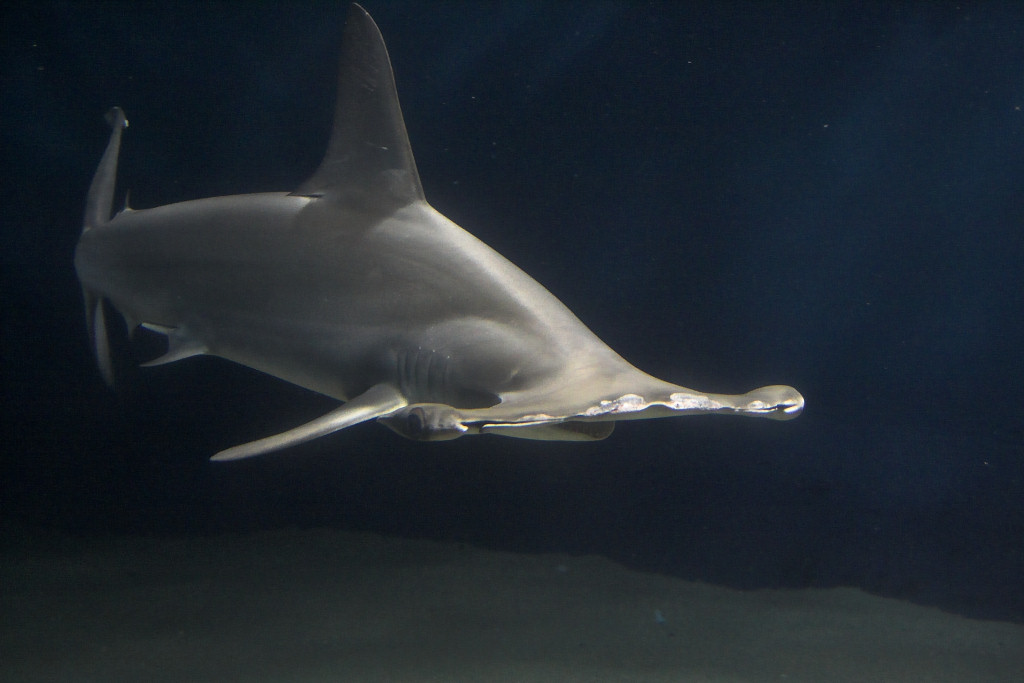
‘The sea about Athos is very full of monsters who seized and devoured the drowning Persians.” So observed Herodotus in 425BC in the earliest recorded mention of sharks in history.
But whereas European maps featured exotic and unlikely sea monsters for the next couple millennia, sharks were well known to those who lived in close contact with them. Playing a strong role in their mythology, the natives of Hawaii held rituals in the hope that their ancestors might become sharks. They could then help drive fish into their nets, protect them from danger and, of course, kill their enemies.
Other Pacific Islanders saw sharks as gods who needed to be appeased by regular sacrifice. The priests would dress up in a long shark costume and whoever the nose ended up pointing at would be strangled, chopped up and thrown into the sea for the sharks to feed on.
In Fiji, they warded off shark attacks through the magic of shark-charmers who would capture one and then hold a ceremony where they would kiss its belly. In 1960, a fraternity in Florida briefly picked up on the idea as an initiation rite though the cops soon put an end to it.
Sharks also provided a way for men to prove their worth in Hawaii as a shark would be trapped in a rock pool arena and a warrior would enter the water armed only with a shark’s tooth mounted on a wooden handle. The obvious modern parallel would be the bull fights in Spain but in this case the odds were presumably very much in favour of the shark.
You could be bitten by a shark even on dry land in North and South America where the teeth were also used as the tips of arrows. And even the night sky wasn’t free from the reminder of the threat of the deep; the stars we see as the belt of Orion were thought by one tribe to be the leftover leg of a man’s mother-in-law who had been eaten by a shark he had trained specifically for the purpose.
Perhaps the root of the fear of sharks is that they challenge our preconceived notions of being the dominant species at the top of the food chain; in an underwater environment we’re forced to yield that status to these apex predators who are such efficient hunters that they’ve hardly evolved at all in the last 100 million years. Consider:
– sharks can smell chemicals and trace them for miles to their origin. That’s you with your nose bleed going for a dip.
– they can hear disturbances from a kilometere away. That’s you splashing in the water with a beach ball.
– they also have the 6th sense of electro-reception. Whenever any creature be it a fish or a drowning sailor flexes its muscles there’s a faint electrical pulse emitted that ca be picked up by distant sharks.
They’re not particularly smart though. Weird things that have been found in shark stomachs include shoes, chairs, the rear half of a horse, a box of nails, a torpedo, drums, and bottles of wine.
In the war between humans and sharks it has to be said that we have by far the most blood on our hands. We’ve been hunting sharks along with whales for centuries and their oil lit lamps through the 19th century and was also used to make cosmetics, perfume and artificial silk.
These days we kill 100 million sharks a year. A large part of the demand comes from shark fin soup and fishing boats will slice off the fins of the sharks they catch with a hot blade and then toss them back in the water to suffocate at the bottom of the sea.
In contrast, sharks attack humans around 75 times a year and kill only 4 of us. Even counting only those who go to the beach, your chances of dying in a shark attack are about 1 in 264 million. All things considered, you’re hundreds of times more likely to be bitten by a human.
But leave it to humans to obsess about irrational fears.
Fear of sharks was well known to sailors back in the days when sharks were so plentiful that some would even swim up rivers to attack cows, but in modern times shark attacks came to our attention with a series when the media also went into a kind of blood frenzy publicising events like when the US Indianapolis was sunk by Japanese submarines in 1945. Help was slow in coming and men drifted in the water for days in life jackets, dying of thirst, exposure and shark attacks. One sailor remembered:
“You were constantly in fear because you’d see ’em all the time. In that clear water you could see the sharks circling. Then every now and then, like lightning, one would come straight up and take a sailor straight down. One came up and took the sailor next to me. It was all somebody screaming, yelling or getting bit.”
The public then forgot about sharks for a long time until in 1974 until Spielberg’s landmark movie, Jaws, came out about a shark that terrorised swimmers by swimming up behind them and playing the cello. The movie’s tag line Don’t Go in the Water convinced millions not to do just that and seaside tourism suffered for years. People were afraid to swim in the sea, lakes and even swimming pools.
We actually make a pretty lousy meal for sharks as we don’t have enough fat but we’re sometimes mistaken for prey, especially when we’re paddling a surfboard and doing a good impression of a turtle. Even if we do get bit we have a good chance to get to safety as the feeding strategy of sharks is to take a good bite and then drop back to wait until we bleed to death. Then they can return to chew on us in peace.
In high-risk areas like the US, Australia and South Africa, all kinds of strategies have been employed ranging from shark spotters on high towers, to shark repellant in the water, to electric fields to shark nets – the latter have worked quite well though sharks were usually found on the inside trying to get out…
And when all else fails there’s always the slight chance that dolphins will come to the rescue. One long distance swimmer noticed a great white shark swimming below him but before he could go into panic a school of dolphins swam in and gave him a protective escort until the shark left.







